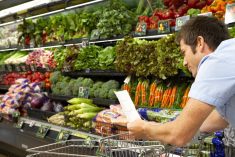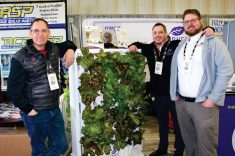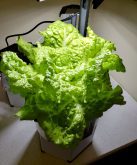A drop in acreage required to insure vegetable crops has opened a door for smaller-scale and direct-marketing farmers.
“This has really changed our ability to be insured quite significantly,” said Jeff Veenstra who farms northeast of Winnipeg.
On January 25, the province announced it would reduce the minimum required acres for vegetable acreage loss insurance to half an acre from three.
Vegetable acreage loss insurance allows growers to get coverage for total loss of crops due to “natural perils,” says Manitoba Agricultural Services Corporation’s (MASC) website.
Read Also

Your best (and easiest) holiday dainty tray
Make-ahead recipes, store-bought goodies and co-operation with friends and family: Here’s how to throw together a stunning, low-stress tray.
Thirteen crops are eligible, including cabbage, sweet corn, onions and winter squash. A minimum of half an acre of one type must be grown to be eligible for insurance.
It’s “definitely a good first step,” said Justin Girard. “We’re pretty happy to see this happen.”
Girard is a director on the board of Direct Farm Manitoba, which represents small-scale, direct-marketing farmers along with farmers’ markets. He also farms near Elie, Manitoba.
Direct Farm Manitoba has advocated for business risk management programs (BRMs) for its members for several years. Many of their farmer members don’t have the scale to qualify for conventional crop insurance despite growing commercial crops.
The reduction of the acreage requirement won’t help all members, but it will help “a few,” said Girard.
Veenstra, who owns Wild Earth Farms with wife Janna, said they’ve had their winter squash crop insured previously. Now they’ll be able to cover more crops, including carrots, cabbage and broccoli.
“It’s not necessarily going to change how we farm, but it’s going to change the way that we feel going into the season,” he said.
It may also give them the confidence to expand if needed, knowing at least some of their costs will be covered, said Veenstra.
He added that with their diverse array of crops, they always expect loss in a year. Diversity has, to a degree, helped cover shortfalls.
Acreage loss insurance is not a perfect solution.
“The current system doesn’t really reflect our input costs,” Veenstra said.
Since they don’t use conventional pesticides, herbicides and fungicides but rely on manual weed management, input costs are much higher, he said.
Because they direct market, they also get a higher payout per acre, he added.
Veenstra said he’d appreciate the option for higher coverage and said he’d be willing to pay higher premiums to get it.
“I’m not asking for a special treatment; I just want to have adequate coverage for what we are doing,” Veenstra said.

The requirement that crops be adequately irrigated may disqualify Martin Hnatiuk who farms near East St. Paul. Hnatiuk said they’re able to irrigate about two acres out of over 20 acres he farms.
“That clause, you know, kind of shuts us down,” he said.
He added he’s been farming for about 30 years, only installed irrigation less than a decade ago, and has generally done fine.
With acres of sweet corn, pumpkins, cabbage and potatoes, they’ve usually been able to rely on rainfall. The site has no access to water. In a pinch they’ve brought a water tank and watered — which took days, Hnatiuk said.
He questioned why the insurance wouldn’t cover drought loss.
Vegetable crops generally require more water than field crops like wheat, said David Van Deynze, MASC’s chief product officer. As high-value crops that are generally on smaller acreages (compared to grain and oilseed crops), growers can generally justify the expense of irrigation.
Drought should not be a likely reason for total crop loss, he said. Some cases, like 2021’s severe drought, may be an exception.
Van Deynze explained that vegetable acreage loss insurance was initially designed to exclude non-commercial growers, which is why it had the three-acre minimum requirement.
“Listening to and working with Direct Farm Manitoba over the last couple of years, you know, it helped us realize that hey, there’s a lot of commercial vegetable growers who have less than three acres of (any single) crop,” he said.
“We do think it’s opened the door for a number of new producers to at least qualify for insurance,” he said.
Direct Farm Manitoba will continue to work on more BRMs for its members.
“We’re going to have to continue to work together to figure out how to update the BRMs to better reflect what’s happening in our communities and to better reflect the growing consumer demand for particular products and particular services from our sector,” Girard said.
Producers are growing diverse crops and using different methods because of consumer demand, he added. Despite their ability to find creative solutions, they want the same protection for natural perils that are out of their control.
BRMs may help farms to grow, Girard said. Some may be overdiversified because of lack of insurance, which can cause challenges for the farm.
Van Deynze said MASC is working with Direct Farm Manitoba to find a solution, but no new programs are imminent.
















